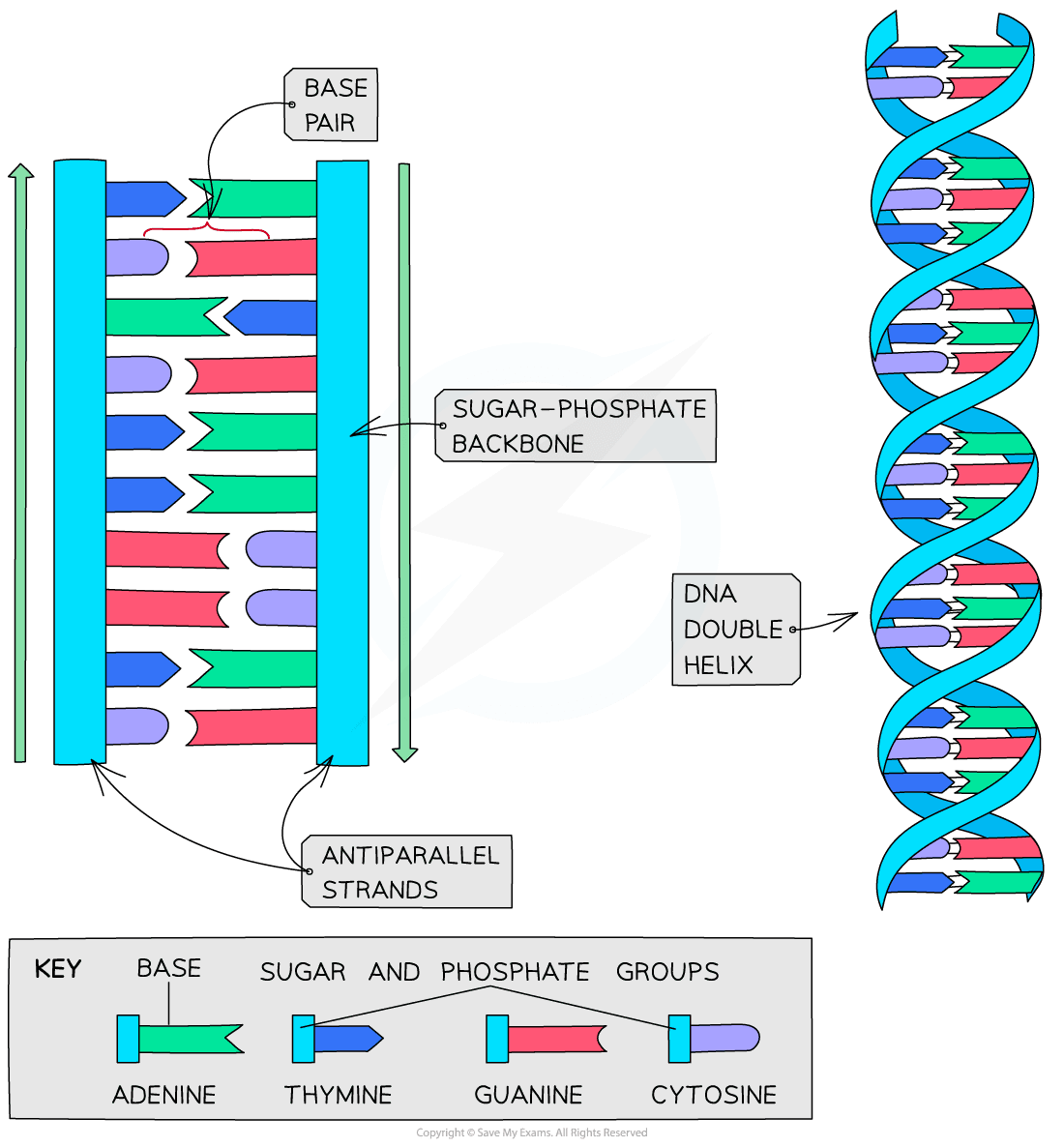The Genome
- The entire set of the genetic material of an organism is known as its genome
- In 2003, scientists completed a 13-year project in which they sequenced the genes that make up the whole human genome
- This project was named the human genome project
- A gene is a section of DNA that codes for a particular sequence of amino acids
- These sequences of amino acids form proteins
- Genes control our characteristics as they code for proteins that play important roles in what our cells do
The Structure of DNA
- DNA, or deoxyribonucleic acid, is the genetic material found in the nucleus of a cell
- DNA is a polymer made up of two strands coiled around to make a double helix

The structure of DNA and complementary base pairs
Nucleotides
- DNA is a polymer (a molecule made from many repeating subunits)
- These individual subunits of DNA are called nucleotides
- Each nucleotide consists of a common sugar and phosphate group with one of four different bases attached to the sugar
A nucleotide
- The phosphate and sugar section of the nucleotides form the ‘backbone’ of the DNA strand (like the sides of a ladder) and the base pairs of each strand connect to form the rungs of the ladder
DNA is a polynucleotide – this means it is a polymer made up of many repeating subunits (monomers) known as nucleotides
Base pairing
- There are four different nucleotides
- These four nucleotides contain the same phosphate and deoxyribose sugar, but differ from each other in the base attached
- There are four different bases: Adenine (A), Cytosine (C), Thymine (T) and Guanine (G)
- The bases on each strand pair up with each other, holding the two strands of DNA in the double helix together
- The bases always pair up in the same way:
- Adenine always pairs with Thymine (A-T)
- Cytosine always pairs with Guanine (C-G)
- This is known as ‘complementary base pairing’
- The complementary base pairs (A-T and C-G) pair up by forming weak hydrogen bonds with each other
DNA complementary base pairs
Extracting DNA
- DNA can actually be extracted from fruit using some basic classroom equipment
- Fruits that have relatively large amounts of DNA in their cells, such as strawberries, bananas and kiwis, can be used
Method
- Mash the fruit and mix this into a beaker containing a solution of detergent (e.g. washing up liquid) and salt
- The detergent breaks down the cell membranes (and the nuclear membranes), causing the fruit cells to release their DNA
- The salt causes the DNA to stick together
- Filter the mixture into a test tube
- This removes any debris (big, insoluble bits of cell) from the mixture
- Gently add some ice-cold ethanol to the filtrate (the filtered mixture) by pouring the ethanol slowly down the side of the test tube
- This causes the DNA to precipitate (i.e. to come out of solution) as DNA is not soluble in cold alcohol
- The DNA will appear as a stringy white precipitate (a solid)
- If needed, this precipitate can be carefully extracted using a glass rod

A simple method for extracting DNA from fruit




